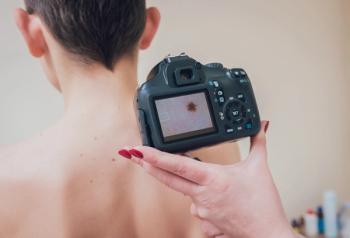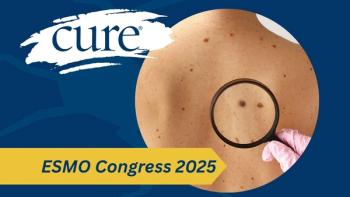
If You Can Spot It, You Can Stop It: Schedule an Annual Skin Exam With Your Dermatologist

When caught and treated early, skin cancer is highly curable. When allowed to progress, however, it can cause disfigurement and even death.
Skin cancer is the world’s most common cancer; here in the U.S. more people are diagnosed with the disease each year than all other cancers combined. When caught and treated early, skin cancer is highly curable. When allowed to progress, however, it can cause disfigurement and even death. That’s why The Skin Cancer Foundation recommends that adults see a dermatologist at least once a year for a skin exam and perform monthly self-exams at home. Anything on your skin that is new, changing or unusual could be cause for concern.
Skin Cancer By the Numbers
The three most common forms of skin cancer are basal cell carcinoma (BCC), squamous cell carcinoma (SCC) and melanoma. An estimated 3.6 million cases of BCC are diagnosed in the U.S. each year. Only in exceedingly rare cases can it spread to other parts of the body and become life-threatening. It shouldn’t be taken lightly, though: it can be just as disfiguring as other forms of skin cancer if not treated promptly. Almost 2 million cases of SCC are diagnosed in the U.S. each year, resulting in more than 15,000 deaths annually. Melanoma, one of the most dangerous forms of skin cancer, is now being diagnosed more frequently than in the past. In 2021, an estimated 207,390 new cases of melanoma will be diagnosed in the U.S.— almost 6 percent more than in 2020.
“Skin cancer is an epidemic in this country and we anticipate that incidence will continue to rise,” says Deborah S. Sarnoff, MD, president of The Skin Cancer Foundation. “There is some good news: One of the reasons we’re finding more skin cancers is because more people are getting screened than ever before, and doctors are diagnosing tumors that would have gone undetected in the past.”
While melanoma incidence is on the rise, the mortality rate is expected to decrease by 22 percent this year. Significant advances in treatment, better public education and early detection are all contributing to this positive trend.
It's impossible to overstate the importance of getting regular skin exams with a dermatologist. Finding a melanoma early can make all the difference in your prognosis — the estimated five-year survival rate for patients whose melanoma is detected early is about 99 percent. The survival rate falls to 66 percent when the disease reaches the lymph nodes and 27 percent when the disease metastasizes to distant organs.
A professional skin exam takes only a few minutes out of your day, but it can give you peace of mind for the year. To make the most of your appointment, check your skin beforehand and take note of any new, changing or unusual growths on your skin. Be sure to remove any nail polish from your fingernails and toenails. Direct your dermatologist’s attention to any spots you noticed during your exam of your own skin. Be sure your physician examines hard-to-reach areas like the scalp, soles of the feet and between the toes. Don’t be afraid to ask questions!
The Skin Cancer Foundation’s Guide to Skin Self-Exams
- Examine your face, especially your nose, lips, mouth and ears — front and back. Use mirrors to get a clear view.
- Thoroughly inspect your scalp, using a blow-dryer and mirror to expose each section to view. Get a friend or family member to help, if you can.
- Check your hands carefully: palms and backs, between the fingers and under the fingernails. Continue up the wrists to examine both the front and back of your forearms.
- Standing in front of a full-length mirror, begin at the elbows and scan all sides of your upper arms. Don’t forget the underarms.
- Next, focus on the neck, chest and torso. Women should lift breasts to view the undersides.
- With your back to the full-length mirror, use a hand mirror to inspect the back of your neck, shoulders, upper back and any part of the back of your upper arms you could not view in step 4.
- Still using both mirrors, scan your lower back, buttocks and backs of both legs.
- Sit down; prop each leg in turn on the other stool or chair. Use the hand mirror to examine the genitals. Check the front and sides of both legs, thigh to shin, ankles, tops of feet, between toes and under toenails. Examine soles of feet and heels.
For more information, visit





